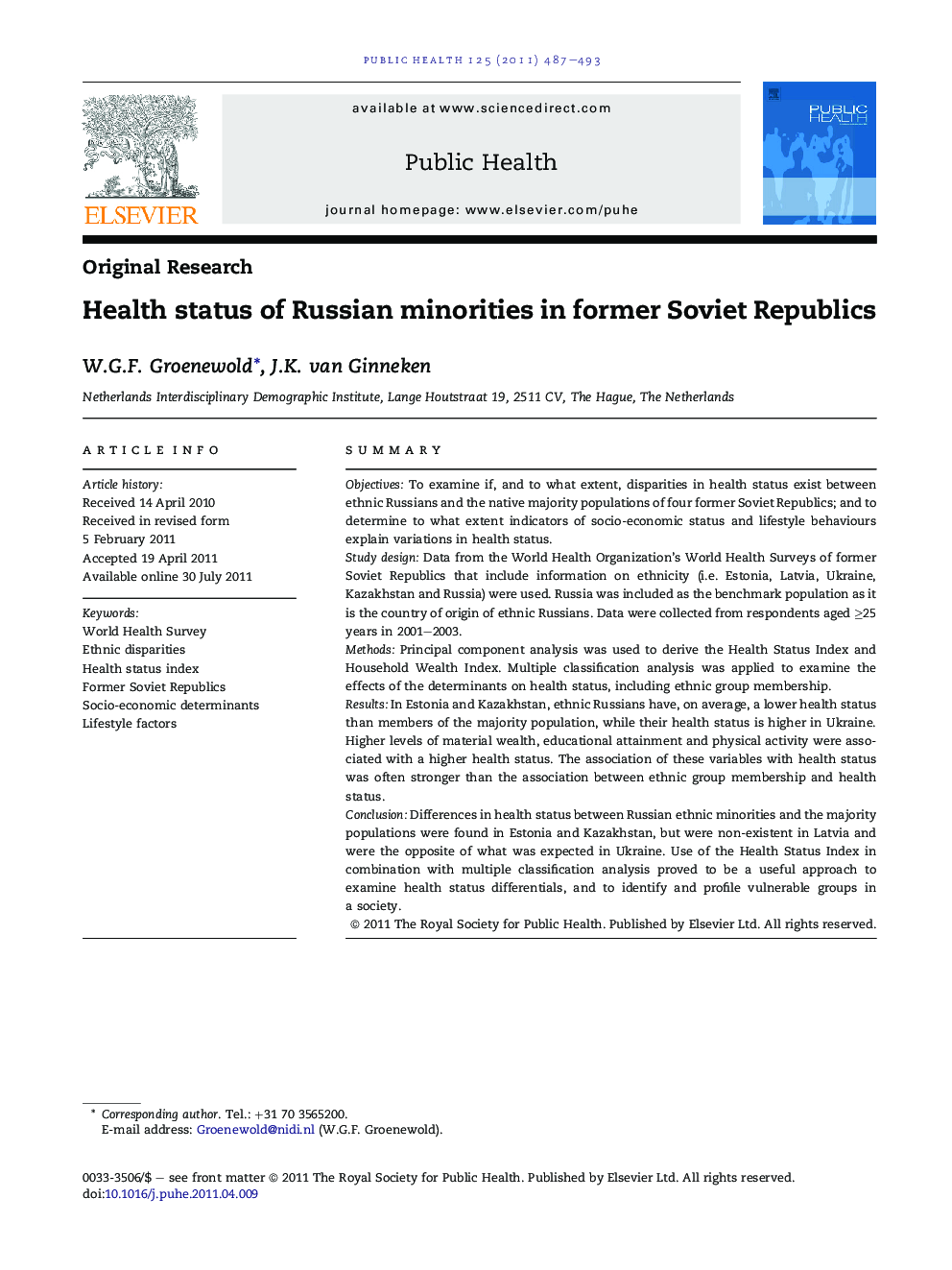| Article ID | Journal | Published Year | Pages | File Type |
|---|---|---|---|---|
| 1087766 | Public Health | 2011 | 7 Pages |
SummaryObjectivesTo examine if, and to what extent, disparities in health status exist between ethnic Russians and the native majority populations of four former Soviet Republics; and to determine to what extent indicators of socio-economic status and lifestyle behaviours explain variations in health status.Study designData from the World Health Organization’s World Health Surveys of former Soviet Republics that include information on ethnicity (i.e. Estonia, Latvia, Ukraine, Kazakhstan and Russia) were used. Russia was included as the benchmark population as it is the country of origin of ethnic Russians. Data were collected from respondents aged ≥25 years in 2001–2003.MethodsPrincipal component analysis was used to derive the Health Status Index and Household Wealth Index. Multiple classification analysis was applied to examine the effects of the determinants on health status, including ethnic group membership.ResultsIn Estonia and Kazakhstan, ethnic Russians have, on average, a lower health status than members of the majority population, while their health status is higher in Ukraine. Higher levels of material wealth, educational attainment and physical activity were associated with a higher health status. The association of these variables with health status was often stronger than the association between ethnic group membership and health status.ConclusionDifferences in health status between Russian ethnic minorities and the majority populations were found in Estonia and Kazakhstan, but were non-existent in Latvia and were the opposite of what was expected in Ukraine. Use of the Health Status Index in combination with multiple classification analysis proved to be a useful approach to examine health status differentials, and to identify and profile vulnerable groups in a society.
